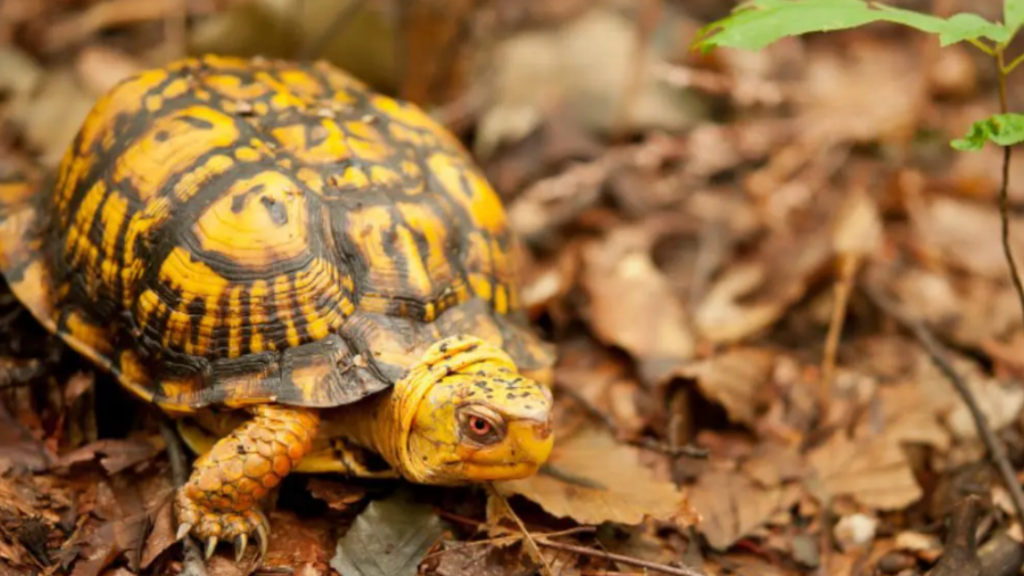Ask a Naturalist: Embracing Beautiful Messes in Nature Benefits Wildlife
Benefits of Leaving Dried Leaves in the Garden
Have you ever felt the urge to rake your leaves after all the trees have gone bare? You leave them for a couple of months but around the new year you’re ready for a clean yard. To have a nice clean lawn or yard free of brown dried leaves is something desired by many; however, there are many benefits to embracing a “messy” yard. And keeping it messy until the new growing season starts in early spring.
It might not always be visible to us but there is a whole world thriving underneath the dead foliage. Dried leaves serve as a habitat for many insects which are a source of food for birds and small mammals during the winter months. Some species that benefit from leaving dried leaves include salamanders, wood frogs, box turtles, earthworms, and millipedes. Thousands of insects including moths (such as the Polyphemus moth), butterflies, and lightning bugs also depend on dried leaves for shelter and for a place to lay their eggs in the winter. Leaving not only dead leaves, but also dried up shrubs and seeds is beneficial to the food chain. Birds will visit gardens and feast on seeds inside dried seedpods and scavenge for insects in the leaf piles. If you have an open yard, you may also see deer and bunnies joining the feast.
Decomposing leaves also help boost soil fertility so they can be used as mulch around trees, shrubs, and other plants throughout the winter. They add nutrients to the soil and help with water retention so they’re a great source of natural fertilizer! They can help suppress weeds and are also less expensive than buying pine straw, pine bark, or other purchased mulches.
Leaving “unsightly” spent plants, dried stalks, and dead weeds in your garden might bother you at first, but when you learn more about how it benefits wildlife and your garden itself, you can find it fruitful and come to appreciate the beautiful mess. Also, keep in mind that the ideal time to clean up your garden is right before the new growing season starts in late winter or early spring, this will give wildlife an opportunity to thrive underneath the dried leaves and plants. If you still feel the need to tidy up your yard, consider collecting leaves and dried weeds, and branches into a pile in a place in your garden where it is out of sight to you. Doing this will provide many of the same benefits to wildlife.
“The National Wildlife Federation offers these tips and recommendations for leaves in your yard or garden:
- Let leaves stay where they fall or move them into your garden beds to protect your plants’ roots, suppress weeds, preserve soil moisture and eventually break down and return nutrients to the soil.
- Rake leaves off the lawn to use as mulch in garden beds.
- Let leaf piles decompose; the resulting leaf mold can be used as a soil amendment to improve structure and water retention.
- Make compost: Combine fallen leaves (“brown material”) with grass clippings and other “green material” and keep moist and well-mixed. You’ll have nutrient-rich compost to add to your garden next spring.
- Share them with neighbors, friends, schools and others. Some communities will pick up leaves and make compost to sell or give away.
- Build a brush shelter. Along with branches, sticks and stems, you can use leaves to make brush piles that shelter native wildlife.”
Negative Impacts of Removing Dried Leaves
“According to the U.S. Environmental Protection Agency, leaves and other yard debris account for a whopping 33 million tons yearly – more than 13 percent of the nation’s solid waste!” So by not bagging up dried foliage from your yard you’re also reducing the waste taken to landfills with already limited space. In addition, solid-waste landfills are the largest source of man-made methane, which is one of the most problematic greenhouse gases, in the US. Using a leaf blower or lawn mower to collect/mulch leaves also has added negative impacts to the environment such as fuel usage and noise pollution. Most importantly, by removing leaves from your yard you’re also removing shelter and food sources for thousands of species of wildlife from your community.
So, while having a tidy, clean garden might be a priority to some, learning to appreciate beautiful “messes” in the garden can have a great impact on wildlife conservation. One of my favorite things to do in the winter is look out the window and observe the birds digging through the dried foliage, especially the Towhees! I hope you can enjoy some wildlife moments this winter too.
Resources:
https://ncwf.org/blog/leave-the-leaves/
https://richmond.ces.ncsu.edu/2016/10/leave-the-leaves/

